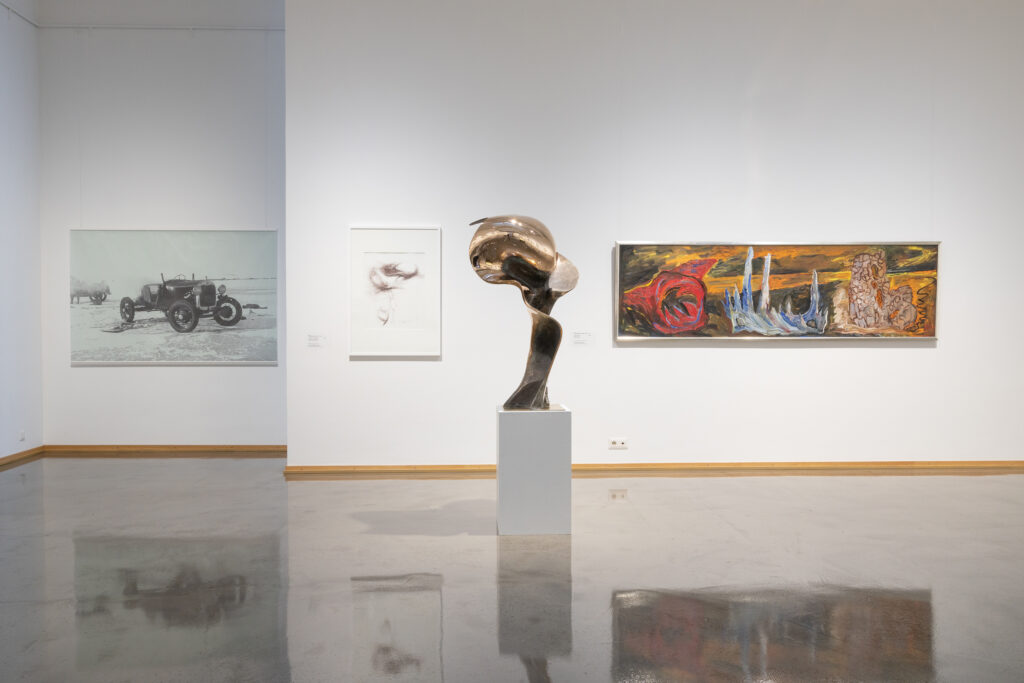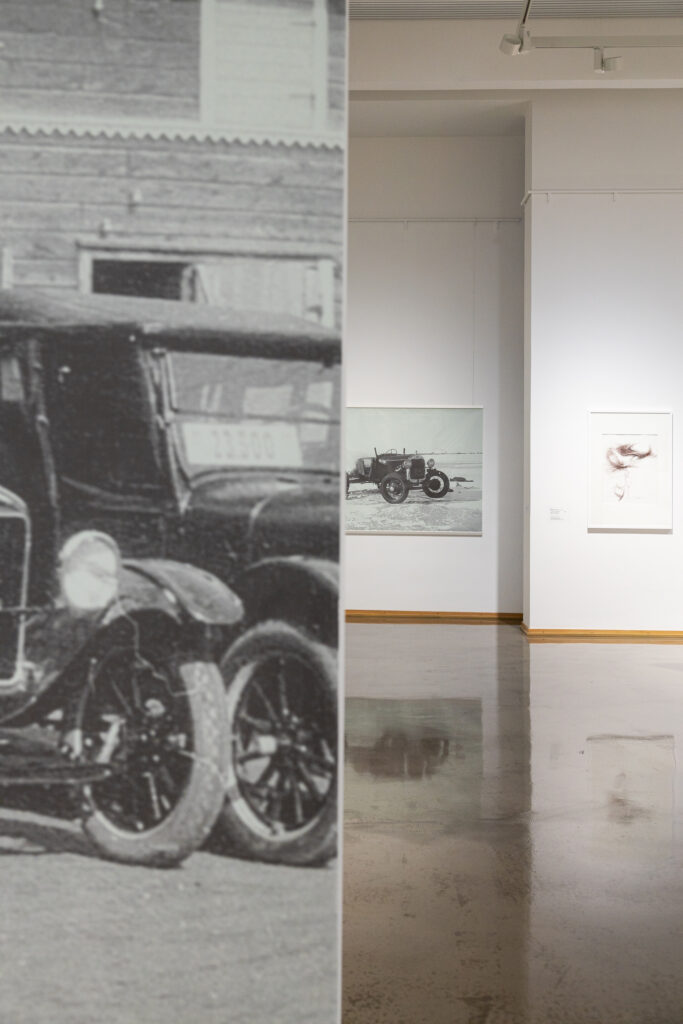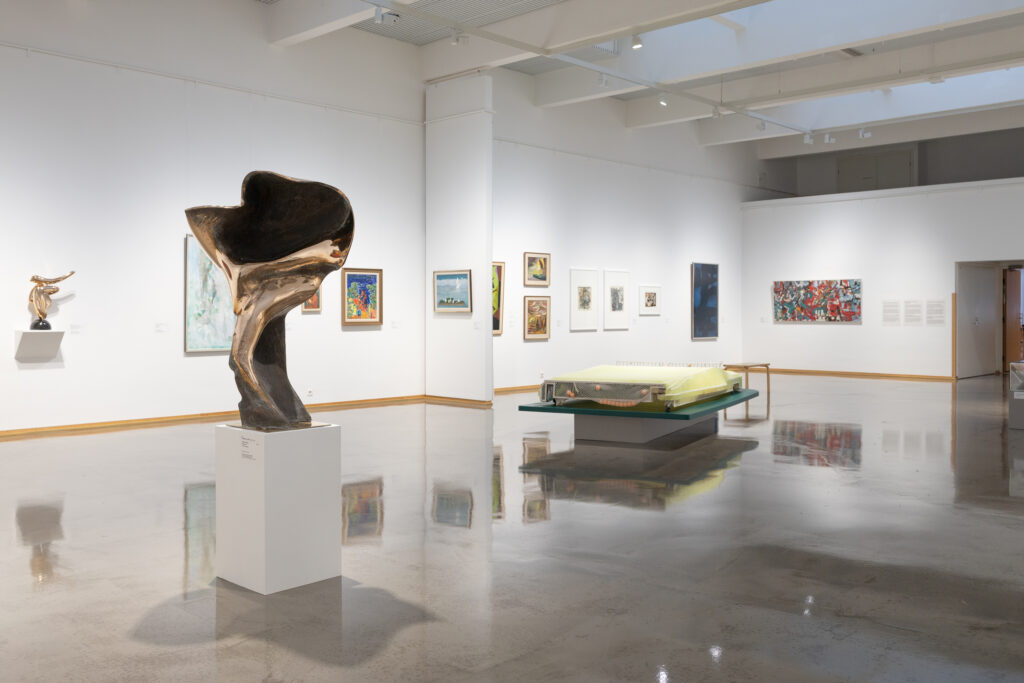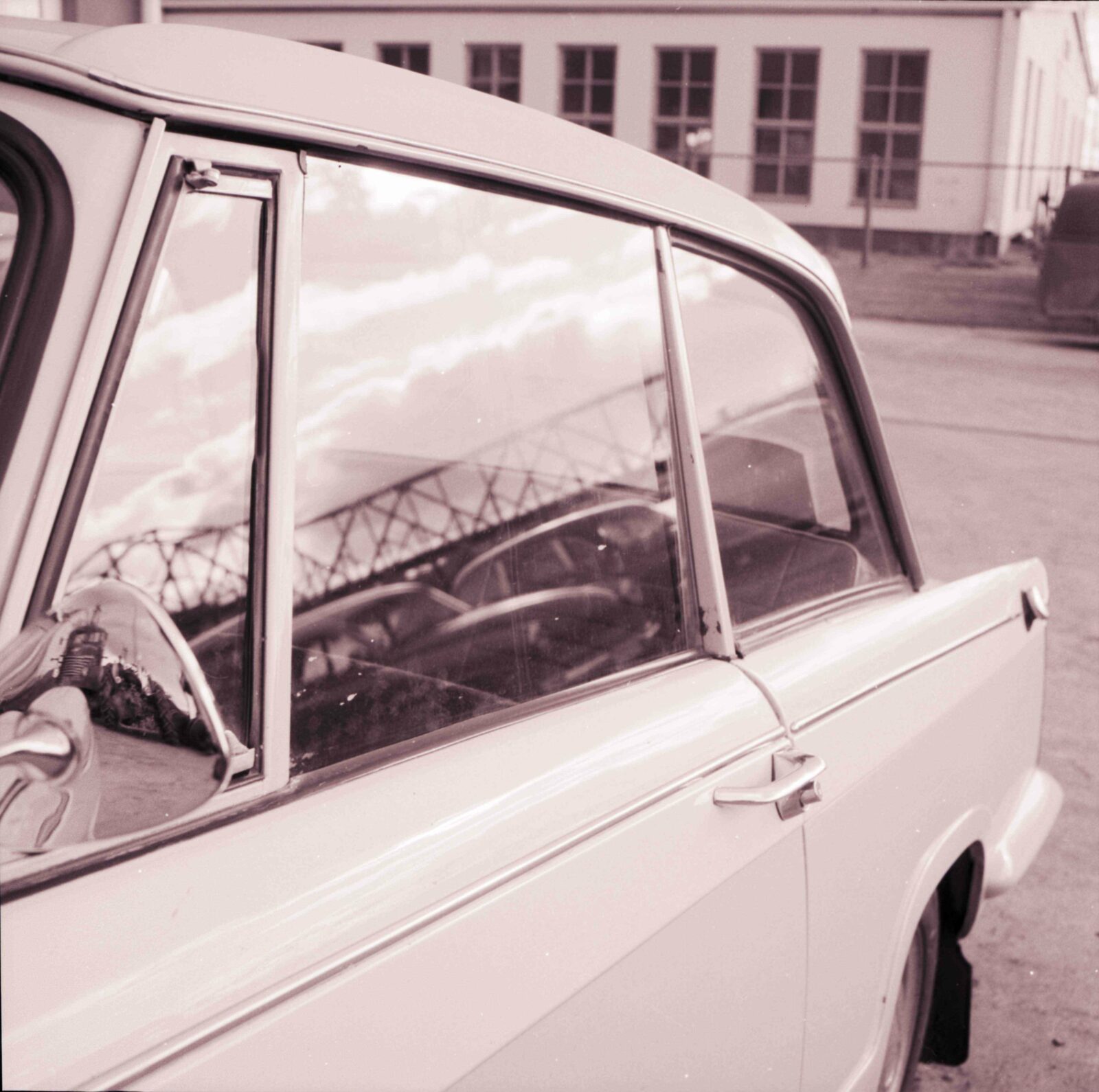Crossroads



Photo: Eija Mäkivouti
Life is full of crossroads. They represent the moments when the old and the new meet. The history of art knows many crossroads. As a new era begins, artists move from one theme and style to another in their works.
In the history of the Aine Art Museum, cars and art intersect. Son of a farmer from Karunki, Lapland, Eelis Iisak (aka Iikka) Aine (1893–1974) was eager to see modernity and progress. In the 1920s he owned one of the first automobiles in Northern Finland. 100 years ago, driving a car showed everyone that you had faith in the future with its modern lifestyle. Iikka Aine enjoyed taking part in speed races on ice tracks. As early as 1923, when hardly any roads existed in Northern Finland, he started importing Ford automobiles from Denmark.
Crossroads call for courage. What will be ahead if I turn to an unknown direction at the crossroads?
Art and cars intersecting
When the Aine car dealership had passed from Iikka Aine to his son Veli, it not only encouraged physical movement but also set in motion people’s spiritual values. As the car business flourished from the 1950s onwards, a major collection of Finnish art was accumulated by Veli and Eila Aine. Today it is known as the backbone of the collections of the Aine Pictorial Art Foundation and the Aine Art Museum.
Art, cars, and business intersected in the life of this collector couple. Thanks to them, people in Northern Finland can today enjoy the extensive collections of the Aine Pictorial Art Foundation and Art Museum and admire at the museum building, Rajakartano, designed by architect Matti Porkka in the modern spirit.
Modernists at the crossroads of art
The modernists and constructivists whose works are included in the collections of the Aine Pictorial Art Foundation were forerunners in their own period. They opened up the way towards an abstract and freer artistic expression. Without such courageous pioneers, it is difficult for new ideas to spring up.
The role of pioneers is never easy. From the 1920s onwards, Finnish artists had to live in the midst of major turbulence and, during wartime, they were obliged to participate in national defence. The post-war reconstruction period however prompted renewed enthusiasm in the field of art. Modernism and internationality that had been budding before the war now gathered momentum, and conceptions of art broadened.
Contemporary art and modernists intersecting
The Crossroads exhibition also presents contemporary and older art in parallel. The collections of the Aine Pictorial Art Foundation and Art Museum grow with new artworks every year. In this way, the art collection started by the collector couple remains in constant dialogue, or at crossroads, with today’s artists and new works.
Crossroads in Tornio
The history of the city of Tornio is full of crossroads. As a border city, Tornio has been the focal point of many events in history. The Torne River Valley that forms a natural border between Finland and Sweden has always represented a tangible crossroads between cultures, languages, identities and art. In 1967, Sweden switched to driving on the right, which had been the practice in Finland. The earlier traffic arrangement at the border had been in the the shape of a number eight: drivers from Finland to Sweden and from Sweden to Finland respectively were guided to select the right lane depending on which country they were heading to. This real-life crossroads loop at the border reminded travellers of a crossing between two countries.
Working group: Anita Alamaunu, Amanda Hakoköngäs, Jari Hannuniemi, Virpi Kanniainen, Pasi Makslahti, Mikko Saarenpää, Brita-Kaisa Välimaa
Credits: Museum of Torne Valley (Riikka Pyykkö), Aine Pictorial Art Foundation (Valtteri Aine), Crea Tornio, City of Tornio
